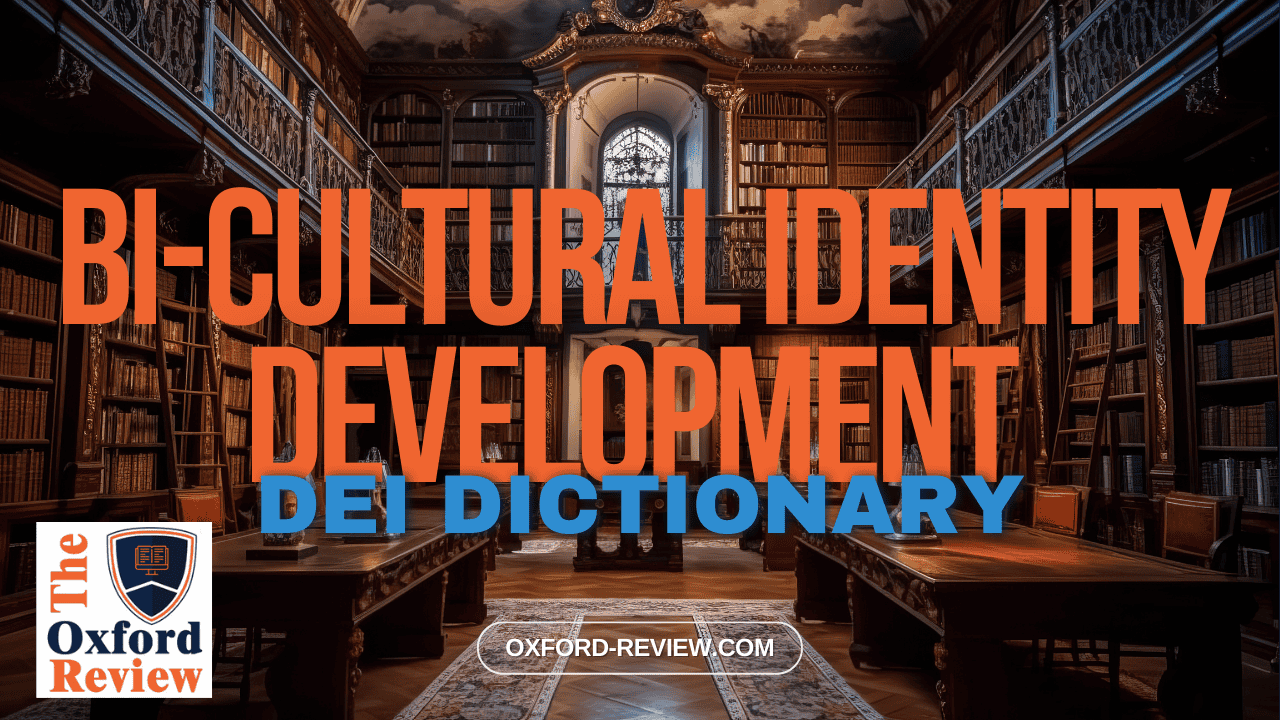Bi-cultural Identity Development – Definition and Explanation

Definition:
Bi-cultural Identity Development refers to the process through which individuals navigate and integrate multiple cultural identities, embracing and adapting to the norms, values, and traditions of two or more cultures. In today’s globalised world, where multiculturalism is increasingly prevalent, understanding bi-cultural identity development is essential for promoting diversity, equity, and inclusion (DEI) in various social, educational, and workplace settings.
Understanding Bi-cultural Identity Development:
Bi-cultural individuals often experience a dynamic interplay between their cultural backgrounds, which can shape their sense of self, worldview, and interpersonal relationships. This process typically involves several stages:
- Awareness: Bi-cultural individuals become aware of their dual cultural identities, recognising the distinct values, customs, and traditions associated with each culture.
- Exploration: During this stage, individuals explore and engage with both cultures, seeking to understand and reconcile any conflicts or discrepancies between them.
- Integration: Integration involves synthesising elements from both cultures into a cohesive identity, allowing individuals to feel comfortable and authentic in diverse cultural settings.
- Adaptation: Bi-cultural individuals learn to adapt their behavior, communication styles, and cultural practices depending on the context, effectively navigating between different cultural environments.
Benefits:
Embracing a bi-cultural identity offers numerous benefits, including:
- Cultural Competence: Bi-cultural individuals develop a deep understanding and appreciation of diverse cultural perspectives, enhancing their ability to communicate and collaborate across cultural boundaries.
- Flexibility: The ability to navigate multiple cultural contexts fosters adaptability and resilience, essential qualities in today’s multicultural society and globalised workforce.
- Enhanced Creativity: Exposure to different cultural influences stimulates creativity and innovation, as individuals draw upon diverse experiences and perspectives to generate new ideas and solutions.
Example:
Consider the case of Sarah, a British-born individual of Chinese descent. Growing up in a multicultural city like London, Sarah was exposed to both British and Chinese cultures from an early age. Initially, she struggled to reconcile the contrasting cultural expectations and values, feeling torn between her British upbringing and her Chinese heritage.
However, as Sarah progressed through her bi-cultural identity development, she began to embrace both aspects of her identity. She celebrated Chinese New Year with her family, while also participating in traditional British festivities like Christmas and Easter. Over time, Sarah integrated elements from both cultures into her daily life, seamlessly switching between English and Mandarin depending on the context.
Today, Sarah embodies the essence of bi-cultural identity development, confidently navigating between her British and Chinese identities with ease. Her unique perspective and cultural fluency make her a valuable asset in diverse social and professional settings, contributing to a more inclusive and harmonious society.
Conclusion:
Bi-cultural identity development is a complex and dynamic process that involves navigating multiple cultural identities. By understanding and embracing bi-culturalism, individuals can foster greater diversity, equity, and inclusion in our increasingly interconnected world. Embracing bi-cultural identities enriches society by promoting cross-cultural understanding, empathy, and collaboration, ultimately paving the way for a more harmonious and inclusive future.
References:
Laketa, A., Chrysochoou, E., Studenica, A., & Vivas, A. B. (2023). Linguistic, affective, parental, and educational contributions to the bicultural identity development of Balkan minority adolescents. Journal of Research on Adolescence, 33(3), 899-912. https://onlinelibrary.wiley.com/doi/full/10.1111/jora.12846
Manning, L. D. (2001). International Adoption and Bi-Cultural Identity Development: A Case Study of a Chinese Cultural School. Journal of Intergroup Relations, 28(1), 16-30. https://eric.ed.gov/?id=EJ628825
Be impressively well informed

Get the very latest research intelligence briefings, video research briefings, infographics and more sent direct to you as they are published
Be the most impressively well-informed and up-to-date person around...
